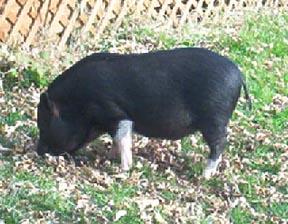Angeles
Angeles is a highly urbanized city located in the province of Pampanga, in the Philippines. It is geographically situated in the Central Luzon region and is bordered by Mabalacat to the north, Mexico to the east, San Fernando to the southeast, Bacolor to the south, and Porac to the west. Known for its vibrant culture, historical landmarks, and booming economy, Angeles has become a significant hub of commerce, education, and tourism in the region.
History[edit | edit source]
The foundation of Angeles dates back to the early 19th century when it was established as a small barrio of San Fernando. Its name was derived from "Los Angeles" in honor of its patron saints, the Holy Angels. The city played a crucial role during the Philippine-American War and the World War II, serving as a site for the infamous Clark Air Base, a major United States military facility. Post-war, Angeles experienced rapid economic growth and urban development, largely due to the presence of the air base, which significantly influenced the local culture and economy.
Geography[edit | edit source]
Angeles is characterized by its flat terrain, with the Zambales Mountains to the west. The city's total land area is approximately 60.27 square kilometers. It experiences a tropical climate, with a pronounced dry season from November to April and a wet season for the rest of the year.
Economy[edit | edit source]
The economy of Angeles is diverse, with a strong presence of industries such as manufacturing, services, and tourism. The closure of Clark Air Base in 1991 led to the transformation of the area into the Clark Freeport Zone, a pivotal move that attracted foreign and local investments. Today, the zone hosts a multitude of businesses, including casinos, resorts, IT hubs, and manufacturing companies. Additionally, Angeles is famous for its culinary heritage, particularly its version of the Kapampangan dish sisig.
Culture and Tourism[edit | edit source]
Angeles is renowned for its cultural festivities, the most notable being the annual Giant Lantern Festival held in December. The city also boasts several historical landmarks, including the Holy Rosary Parish Church and the Salakot Arch. Museums, such as the Museo ning Angeles, offer insights into the city's rich history and heritage. The thriving nightlife in Angeles, especially in areas like the Walking Street, attracts both local and international tourists.
Education[edit | edit source]
The city is a center for education in the region, hosting campuses of several major universities and colleges. Notable institutions include the Holy Angel University and the Angeles University Foundation, which offer a wide range of undergraduate and graduate programs.
Transportation[edit | edit source]
Angeles is accessible by land and air. The Clark International Airport, located within the Clark Freeport Zone, serves both domestic and international flights. The city's road network facilitates easy travel within and outside Angeles, with the North Luzon Expressway (NLEX) connecting it to Metro Manila and other parts of Luzon.
Local Government[edit | edit source]
The local government of Angeles is headed by a mayor, who is elected every three years. The city is divided into barangays, each governed by elected officials. Angeles was declared a highly urbanized city in 1964, granting it autonomy from the province of Pampanga.
Search WikiMD
Ad.Tired of being Overweight? Try W8MD's physician weight loss program.
Semaglutide (Ozempic / Wegovy and Tirzepatide (Mounjaro / Zepbound) available.
Advertise on WikiMD
|
WikiMD's Wellness Encyclopedia |
| Let Food Be Thy Medicine Medicine Thy Food - Hippocrates |
Translate this page: - East Asian
中文,
日本,
한국어,
South Asian
हिन्दी,
தமிழ்,
తెలుగు,
Urdu,
ಕನ್ನಡ,
Southeast Asian
Indonesian,
Vietnamese,
Thai,
မြန်မာဘာသာ,
বাংলা
European
español,
Deutsch,
français,
Greek,
português do Brasil,
polski,
română,
русский,
Nederlands,
norsk,
svenska,
suomi,
Italian
Middle Eastern & African
عربى,
Turkish,
Persian,
Hebrew,
Afrikaans,
isiZulu,
Kiswahili,
Other
Bulgarian,
Hungarian,
Czech,
Swedish,
മലയാളം,
मराठी,
ਪੰਜਾਬੀ,
ગુજરાતી,
Portuguese,
Ukrainian
Medical Disclaimer: WikiMD is not a substitute for professional medical advice. The information on WikiMD is provided as an information resource only, may be incorrect, outdated or misleading, and is not to be used or relied on for any diagnostic or treatment purposes. Please consult your health care provider before making any healthcare decisions or for guidance about a specific medical condition. WikiMD expressly disclaims responsibility, and shall have no liability, for any damages, loss, injury, or liability whatsoever suffered as a result of your reliance on the information contained in this site. By visiting this site you agree to the foregoing terms and conditions, which may from time to time be changed or supplemented by WikiMD. If you do not agree to the foregoing terms and conditions, you should not enter or use this site. See full disclaimer.
Credits:Most images are courtesy of Wikimedia commons, and templates, categories Wikipedia, licensed under CC BY SA or similar.
Contributors: Prab R. Tumpati, MD

